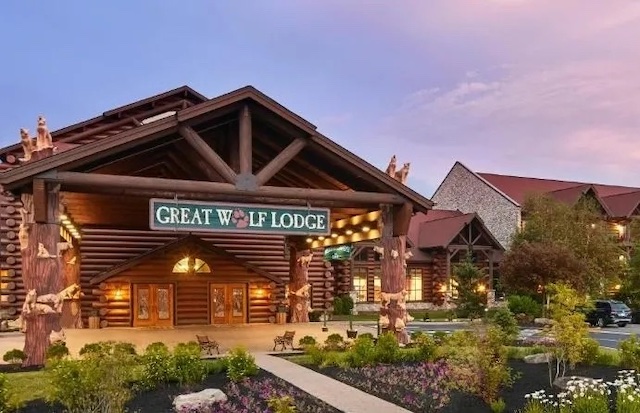Unique Features Of Safaris In Kenya
Kenya, a premier safari destination in East Africa, offers an unparalleled blend of wildlife experiences, breathtaking landscapes, and rich cultural interactions. Renowned for its diverse ecosystems and vibrant wildlife, Kenya has become synonymous with safari adventures. This article delves into the unique features that make Kenyan safaris stand out, exploring the country’s diverse landscapes, iconic wildlife, cultural experiences, and innovative conservation efforts.
Diverse landscapes and ecosystems
Kenya’s geographical diversity plays a pivotal role in its unique safari experiences. The country’s varied landscapes include savannahs, highlands, deserts, and coastal regions, each supporting different wildlife and offering distinct safaris.
1) Savannahs
The expansive savannahs of Kenya, such as the Maasai Mara and Tsavo, are among the most iconic safari destinations. The Maasai Mara is renowned for its rolling grasslands and the Great Migration, a spectacular annual event where millions of wildebeest and zebras traverse the plains in search of fresh grazing. Tsavo, one of Kenya’s largest national parks, is known for its varied habitats ranging from savannahs to semi-arid regions, providing a rich array of wildlife.
2) Highlands
The central highlands of Kenya, including Mount Kenya and the Aberdare Range, offer different safaris. These regions are characterized by lush forests and high-altitude environments, providing habitats for species such as the endangered mountain bongo and various primates. The cool climate and verdant landscapes create a stark contrast to the typical savannah scenery.
3) Great rift valley
The Great Rift Valley is a geological marvel with its alkaline and freshwater lakes. Lake Nakuru, known for its flamingo populations, and Lake Naivasha, with its diverse birdlife and hippos, are key highlights. The Rift Valley’s unique landscapes offer diverse wildlife viewing opportunities and spectacular scenery.
4) Coastal regions
Kenya’s coastline along the Indian Ocean features mangrove forests, coral reefs, and sandy beaches. The marine environment supports a range of species, including dolphins, sea turtles, and vibrant fish. Marine safaris and snorkeling trips in areas like the Kisite-Mpunguti Marine National Park provide a unique aquatic experience.
Iconic wildlife Experiences
Kenya’s wildlife is renowned for its diversity and abundance. The country is home to an impressive array of species, each offering unique safari experiences.
1) Big five
Kenya is one of the best places to encounter the Big Five—lion, leopard, elephant, buffalo, and rhinoceros. The Maasai Mara and Amboseli National Park are prime locations for spotting these iconic animals. The Maasai Mara’s open plains are ideal for observing lions and leopards, while Amboseli offers excellent opportunities to see large elephant herds against the backdrop of Mount Kilimanjaro.
2) Great migration
The Great Migration, which occurs between July and October, is one of nature’s most spectacular events. The Maasai Mara becomes a focal point during this period as millions of wildebeest and zebras make their way from the Serengeti in Tanzania. This migration provides an incredible opportunity to witness dramatic river crossings, predator-prey interactions, and the sheer scale of this natural phenomenon.
3) Endangered species
Kenya is crucial for the conservation of several endangered species. The black rhino, critically endangered due to poaching, finds refuge in conservation areas such as the Ol Pejeta Conservancy. Additionally, the Rothschild’s giraffe, another endangered species, is found in Kenya’s western regions and various private conservancies.
4) Bird watching
Kenya is a bird-watcher’s paradise, with over 1,000 species recorded. The Rift Valley lakes, such as Lake Nakuru, are particularly famous for their flamingo populations. The diverse habitats across the country support a wide variety of bird species, including the rare and elusive Somali ostrich and the vibrant and striking secretary bird.
Cultural encounters and community involvement
Kenyan safaris offer more than just wildlife viewing; they provide opportunities for meaningful cultural interactions and insights into local traditions.
1) Maasai culture
The Maasai people, known for their distinctive dress and vibrant beadwork, are among Kenya’s most famous cultural groups. Visiting Maasai villages and engaging with the community provides insight into their traditional lifestyle, customs, and ceremonies. Many safari lodges in the Maasai Mara region offer cultural experiences such as Maasai dance performances and guided tours of local villages.
2) Community conservancies
Kenya’s safari experience is increasingly intertwined with community involvement through conservancies. These initiatives, often run in partnership with local communities, focus on wildlife conservation and sustainable tourism. Conservancies like the Maasai Mara Conservancy involve local Maasai communities in protecting wildlife and managing tourism, providing economic benefits while ensuring the preservation of natural resources.
3) Cultural heritage sites
Beyond the wildlife, Kenya boasts cultural heritage sites such as Lamu Island, a UNESCO World Heritage site with Swahili architecture and rich historical significance. Visiting such sites offers a deeper understanding of Kenya’s diverse cultural heritage and historical influences.
Innovative conservation efforts
Kenya’s commitment to conservation is a defining feature of its safari experience. The country has implemented numerous innovative strategies to protect its wildlife and natural habitats.
1) Anti-poaching initiatives
Poaching remains a significant threat to wildlife, particularly for species like elephants and rhinos. Kenya has made strides in anti-poaching efforts by employing advanced technologies such as drones, GPS tracking, and electronic surveillance. Additionally, dedicated wildlife protection units and community patrols play a crucial role in safeguarding wildlife.
2) Wildlife corridors
To address habitat fragmentation and ensure wildlife movement, Kenya has established wildlife corridors that connect different protected areas. These corridors facilitate the safe movement of animals between habitats, reducing human-wildlife conflict and promoting genetic diversity within wildlife populations.
3) Community-based conservation
Community-based conservation programs are central to Kenya’s conservation strategy. By involving local communities in conservation efforts and providing economic incentives, these programs foster a sense of stewardship and reduce negative interactions between humans and wildlife. Initiatives such as the Maasai Mara Conservancy and the Amboseli Trust for Elephants exemplify this approach.
4) Ecotourism and sustainable practices
Kenya’s focus on ecotourism emphasizes sustainable practices that minimize environmental impact and promote responsible wildlife viewing. Safari operators are increasingly adopting eco-friendly practices, such as reducing plastic use, conserving water, and supporting local conservation projects. This commitment to sustainability enhances the safari experience while contributing to long-term conservation goals.
Luxurious and varied accommodations
Kenya offers a range of accommodation options to suit different preferences and budgets, enhancing the overall safari experience.
1) Luxury lodges and camps
Kenya is home to numerous luxury lodges and tented camps that provide opulent amenities and exceptional service. These accommodations are often strategically located to offer prime wildlife viewing opportunities. Many luxury lodges feature private decks, gourmet dining, and personalised safari experiences.
2) Eco-friendly camps
For those seeking a more intimate and eco-conscious experience, Kenya’s eco-friendly camps offer a blend of comfort and sustainability. These camps are designed to have minimal environmental impact while providing immersive experiences in nature. Tented camps in remote locations, such as the Maasai Mara and Laikipia Plateau, offer an authentic and close-to-nature safari experience.
3) Budget-friendly options
Kenya also provides budget-friendly accommodations, including basic lodges and camping sites. These options offer an affordable way to experience the country’s wildlife and landscapes without compromising on the safari experience. Many budget lodges still provide excellent game viewing opportunities and guided tours.
Adventure and activities beyond the safari
Kenya’s diverse landscapes offer a range of activities beyond traditional game drives, enhancing the safari experience with additional adventures.
1) Walking safaris
Walking safaris provide a more intimate and sensory experience of the environment. Guided by experienced rangers, participants explore the bush on foot, gaining insights into animal tracks, plant life, and the smaller details of the ecosystem. Walking safaris are available in several regions, including the Maasai Mara and Laikipia.
2) Hot air balloon safaris
For a breathtaking aerial view of the savannahs and wildlife, hot air balloon safaris offer a unique perspective. Floating silently above the landscape, passengers can enjoy panoramic views of the plains and wildlife below. Balloon safaris are often combined with a celebratory champagne breakfast upon landing.
3) Boat safaris
In areas with rivers and lakes, boat safaris provide a different vantage point for wildlife viewing. Lake Naivasha and the Tana River offer boat-based safaris where travellers can spot hippos, crocodiles, and a variety of bird species while enjoying the serenity of the water.
4) Cultural visits and community projects
Engaging in community projects and cultural visits adds a meaningful dimension to the safari experience. Activities may include visiting local schools, participating in conservation initiatives, or supporting local artisans and craftspeople.
Unique safaris
Kenya’s safaris are distinguished by their diverse landscapes, rich wildlife, cultural interactions, and innovative conservation efforts. From the iconic savannahs of the Maasai Mara to the lush highlands of Mount Kenya, the country offers a range of experiences that cater to every safari enthusiast. The opportunity to witness the Great Migration, encounter endangered species, and engage with local communities makes a Kenyan safari a truly unique and enriching adventure. By embracing sustainable practices and supporting conservation initiatives, travelers contribute to the preservation of Kenya’s natural and cultural heritage, ensuring that future generations can continue to experience the magic of this extraordinary destination.





